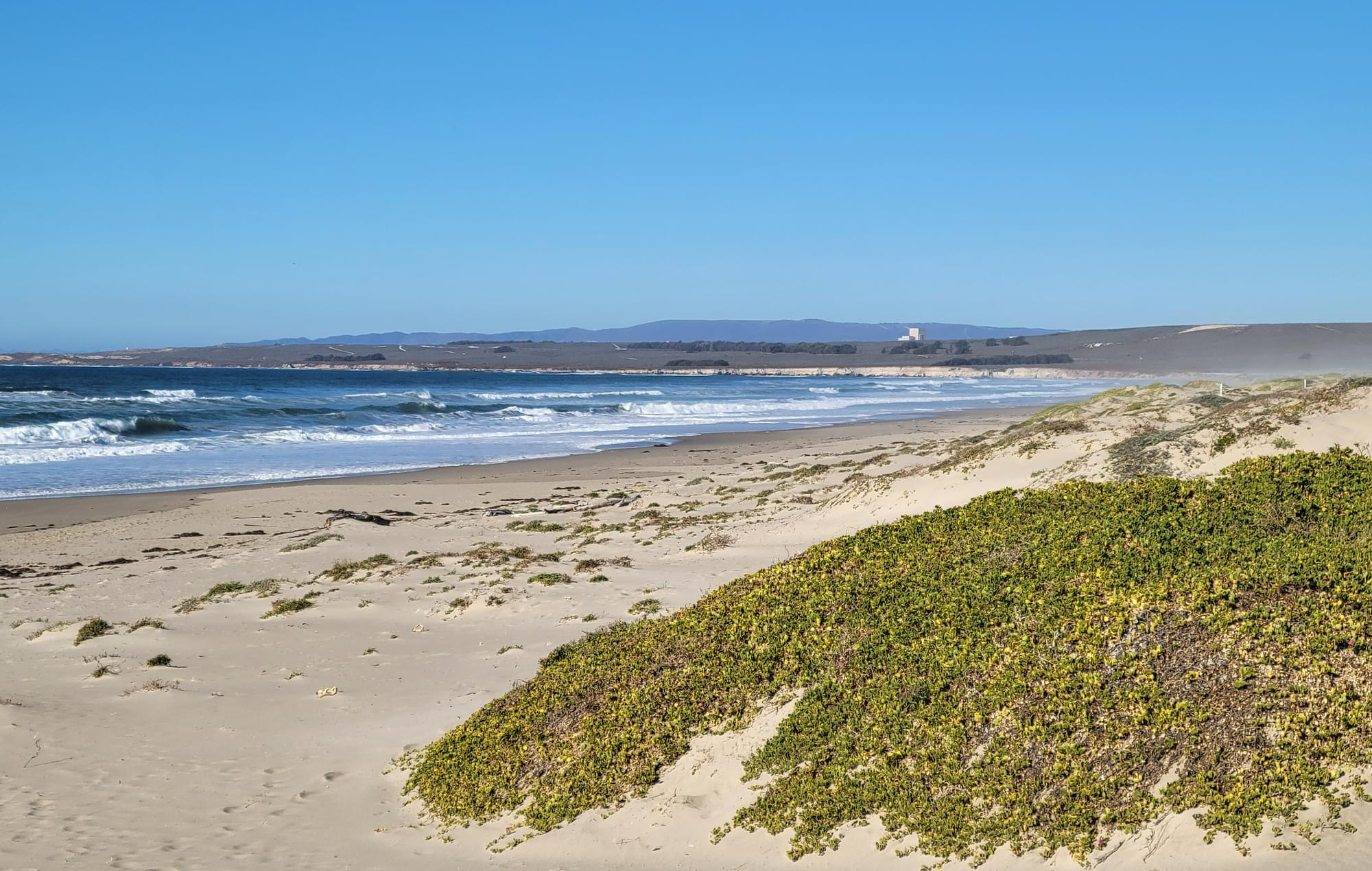Surf Beach

Surf Beach
Lompoc, California 93437
Vandenberg Space Force Base BeachesVSFB Environmental (beach status)
Birds of Interest
Gulls and pelicans are commonplace. During periods of shorebird migration, the beach may have Long-billed Curlew, Whimbrel, Marbled Godwit, Willet, and many flocks of Sanderlings containing other shorebirds. Look for shearwaters offshore.
About this Location
Surf Beach is a publicly accessible area of Vandenberg Space Force Base west of the city of Lompoc. To reach Surf Beach drive west from Lompoc on West Ocean Ave. to the end of the road. Surf Beach is the only public access beach on Vandenberg SFB. It also hosts the “Lompoc-Surf Station” Amtrak stop for the Pacific Surfliner. This line stops twice daily on its 350-mile trek between San Luis Obispo and San Diego, with connections to LAX. Park in the lot next to the station. Cross over the railroad tracks to the trail and beach area.
Sections of Surf Beach are closed between March 1 and September 30 every year during the nesting season of the Western Snowy Plover. The affected areas may be opened earlier than September 30 if all the newly hatched birds reach their fledgling stage beforehand. The closures are in place to protect nesting birds. If a set number of trespass violations have been reached during any nesting season, the beach is closed entirely.
About Vandenberg Space Force Base
See all hotspots at Vandenberg Space Force Base
Vandenberg Space Force Base is located in western Santa Barbara County and makes up a significant portion of coastal north county. VSFB totals some 99,579 acres in size and includes 42 miles of pristine, undeveloped coastline, 9,000 acres of sand dunes, and 5,000 acres of wetland habitats. The topography of Vandenberg SFB is varied and includes hills, mountains, terraces, floodplains, mesas, canyons, and rocky headlands. The highest point on VSFB is Tranquillion Peak located on south base and reaches a height of 2,297 ft. The base contains some of the highest quality coastal habitat remaining in southern or central California.
VSFB also contains a number of freshwater environments including the Santa Ynez River, San Antonio Creek and Barka Slough, Shuman, Cañada Honda, Bear, and Jalama Creeks, as well as man-made lakes. Riparian woodlands are found along these river courses and streambeds and are particularly important for migrating and nesting birds. Because of its protected nature, none of the backcountry areas of VSFB are open to the public or to any kind of development.
Coastal bluffs and rocky headlands provide important roosting and nesting habitat for a number of seabirds. Nest sites are found along cliffs and on offshore rocks along the coast from Purisima Point on north base, to Point Pedernales and Destroyer Rock, and Point Arguello on south base. Coastal access is only available at Ocean Park (Santa Ynez River Estuary), and Surf Beach to the general public. Seasonal restrictions are in place for Ocean Park, Surf, Wall, and Minuteman beaches annually from March 1 to September 30 as part of the annual program to protect the threatened Western Snowy Plover.
The main cantonment (urbanized) area of VSFB located on north base consists of residential, industrial, community service, administrative, and recreational use areas. This cantonment area lies within the restricted security zone of the base and is only accessible to personnel with a base pass. Several VSFB birding hotspots are found within this security zone and are therefore off limits to the general public, while other Hotspots are accessible to the public by county roadways but are still found within the boundaries of the base.
Vandenberg SFB hotspots can be categorized as follows:
1. Publicly accessible hotspots found within the Vandenberg SFB boundary. Birders are subject to the authority of VSFB security forces while visiting these locations. Examples of publicly accessible Hotspots include Barka Slough, Triangle Pond, and Surf Beach. These hotspots do not have "restricted access" in their names.
2. Restricted-access hotspots found within the security zone of Vandenberg SFB. These areas are only accessible to visitors possessing a VSFB pass. Examples include Lake Canyon Ponds, Brown's Beach to Lions Head, and Point Pedernales. These all have "restricted access" in their names.
Base passes will not be issued to the general public at this time and visitors must be “sponsored” onto VSFB by individuals who have this privilege. Birders are permitted to visit any of the hotspots listed as publicly accessible as described above and as indicated on the various hotspot pages found in this guide.
Content from Jamie Chavez
Last updated December 24, 2023